Blackberry care
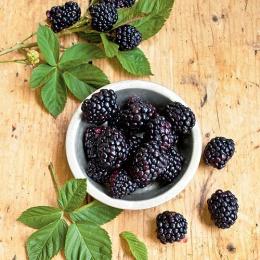
Blackberry – a very beautiful berry! Just looking at the picture is enough to make you want to eat it! Juicy, rich in color – you can just imagine its taste! But in order to grow and eat a berry, you must first take care of the plant itself so that it bears fruit abundantly.
Content:
What is it like - caring for blackberries? What should you do to ensure that the bushes give you a rich harvest of delicious berries? Is there a difference when planting blackberry varieties belonging to different groups? What do you need to know about diseases?
Care
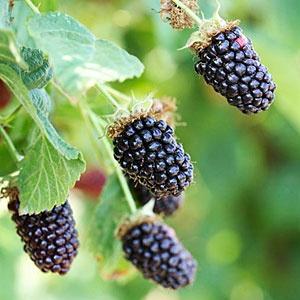
- Any garden plant needs watering. Blackberries should be watered especially abundantly during the growth of new shoots, fruit set and, of course, ripening of the berries.
- Once every 2-3 years, blackberries should be fed with rotted manure or mature compost, for which they loosen the soil under the plants and add manure, mixing it with the ground. Manure consumption is taken at the rate of 4-6 kg per 1 sq. m.
- To preserve moisture, mulch blackberries with compost. Every year in the spring, after the soil has warmed up, a layer of 5-8 cm is poured.
- Between applications of organic fertilizers, blackberries must also be fed with mineral fertilizers, for example nitrophoska (a combination of nitrogen, phosphorus and potassium). The recommended dose is 20-30 g per 1 square meter. m.
- Blackberries are a relative of raspberries. Therefore, experts recommend feeding blackberry bushes with your favorite “delicacy” of raspberries - aqueous solutions of chicken droppings or cow pats. It is good to carry out this type of feeding in June.
- Formation of blackberry bushes is also included in the care process.Most often, pruning is carried out in the fall. In the spring, the tops of branches that have frozen over the winter should be removed.
- After harvesting, which lasts almost until the end of September, blackberry shoots that bear fruit are cut out. At the same time, the bushes are thinned, leaving stronger shoots.
- Pinching the tops of young shoots at the end of May - beginning of June promotes the growth of the bush in width, lateral branches are formed, which increases fruiting. Replacement shoots are pinched when they reach a height of 80-90 cm.
- To improve the conditions for harvesting and caring for blackberry bushes, the plants are tied to a trellis or stretched with a plastic coarse mesh. In winter, the net can be untied from the support and the bushes can be lowered along with it.
- For the winter, blackberries must be covered with a layer of plastic film in case temperatures drop below 20 degrees Celsius.
Blackberry groups
Among the blackberry groups, the following are distinguished: brambles and dewberries.
Kumaniks include powerful bushes with vertical shoots or slightly drooping ones. Dewberries have creeping, long shoots. In both groups, shoots from the previous year bear fruit, after which they die, and no perennial wood is formed. When pruning two-year-old shoots, 6-8 stems are left for dewberries, and 4-6 for brambles.
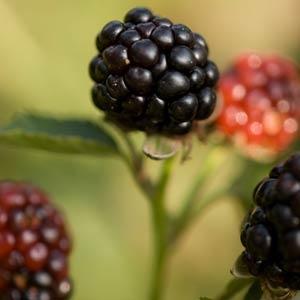
Brambles breed root cuttings and root suckers. The first method is more effective, in which in the spring plots cut off from the roots are planted in the soil, placing young blackberries in a horizontal position. Dewberries reproduce well by rooting the ends of the shoots. To do this, non-lignified blackberry shoots are sprinkled with earth in a groove. The optimal rooting time is the second ten days of August.
Fruiting of blackberries is always extended, however, brambles are slightly ahead of dewberries.Pollination occurs due to its own pollen, so it is not necessary to plant several varieties.
The distance in the row when planting blackberries also depends on the selected group. For brambles, a distance of 60-70 cm is usually taken, and for dewdrops - up to 150 cm. If you want to lay a second row or more, you need to leave a wide row spacing - from 130 to 180 cm.
Dewberries are more frost-resistant, withstanding temperatures down to -200 C. But both types of crops require shelter. It is easier to cover brambles, as the shoots creep. The bramble is gradually bent down. First, the bushes are untied and allowed to bend under their own weight, then a weight can be tied on top, which will gradually tilt the shoots. You don’t have to bend them all the way to the ground; you can immediately lay covering material and secure it well. The snow cover will gradually bend the laid bushes.
Blackberry diseases
Blackberry diseases are the same as at the raspberries. Most often it is affected by fungal diseases, such as anthracosis of shoots and leaves and leaf rust.
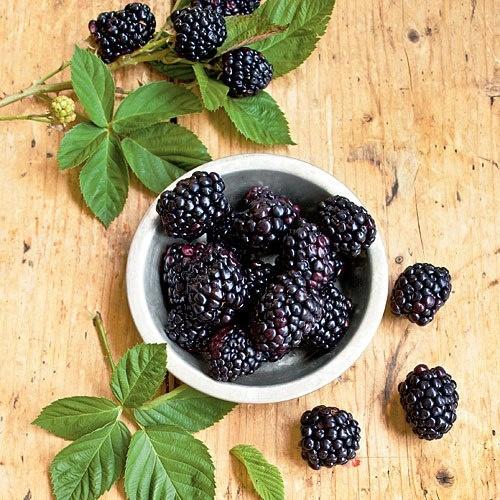
The main measure to prevent them is to plant healthy blackberry bushes on uninfected soil. When signs of infection appear, blue spraying with copper-containing preparations is carried out.
Blackberries can also be affected by stem canker. This is a bacterial disease in which bacteria enter blackberries through wounds. Therefore, be careful when loosening the soil and disinfect gardening tools.
Blackberry care is not difficult, so if you follow these simple manipulations, your blackberry bushes will delight you with fruits every year.

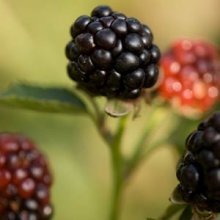
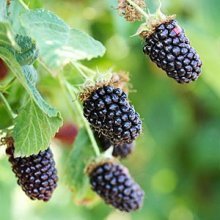
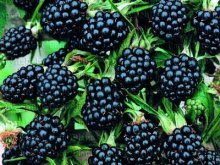
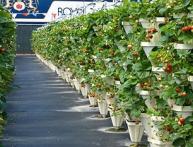
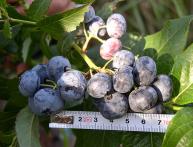

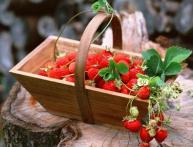
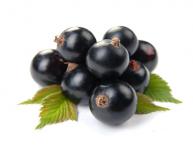
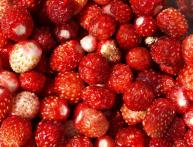
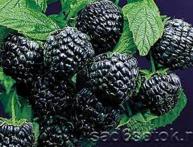
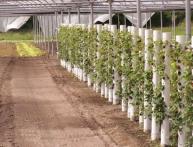
Comments
What a fascinating and interesting article! Indeed, you look at the picture and want to eat it.And the care methods you offer are simply amazing. Thanks to the author for the useful information!
I love this berry, very tasty and high yield every year. But I don’t like to take care of it, it’s very prickly and scratches take a long time to heal. When leaving, you need to dress so as not to get scratched.
I love this berry, very tasty and high yield every year. But I don’t like to take care of it, it’s very prickly and scratches take a long time to heal. When leaving, you need to dress so as not to get scratched.
I agree, you need to be careful in caring for and in harvesting a tasty and appetizing harvest; on me the wounds take a long time to heal. Although in our country it grows without much care, it’s tenacious or something. But I will apply the advice.
We probably have a variety that does not require special care; the only thing we do in the spring is cut out the frozen shoots, install a square trellis and fertilize it.